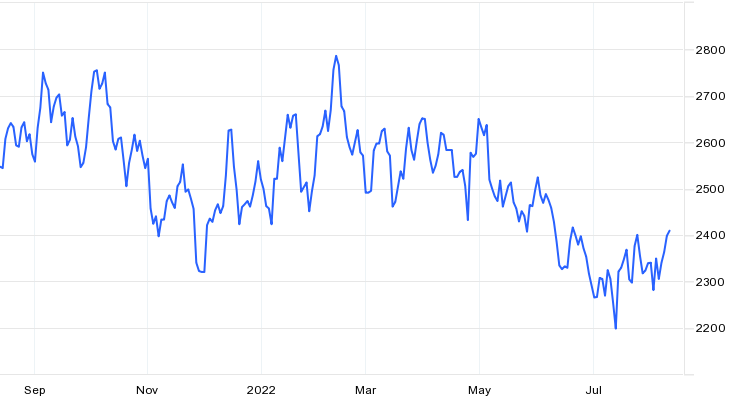What is Driving the Global Cocoa Futures Prices?

As of August 12th, 2022, the price of cocoa coffee futures trading on the Intercontinental Exchange (ICE) was running at a YoY low. Even though the difference in future cocoa prices in 2021 and 2022 is hardly 7%, prices have been pretty volatile in the last couple of months. Trade disruptions, high freight rates, a limited supply of fertilizers, and lower production in major coffee producing regions were among the key factors driving up prices between January 2022 and March 2022. Estimation that global cocoa production will record a YoY decline of 6% due to headwinds from the Russian invasion of Ukraine and agro-climatic issues have continued to trigger cocoa prices throughout the first half of 2022.
Cocoa Future Prices

Source: Intercontinental Exchange (ICE)
According to the International Cocoa Organization (ICCO), the global cocoa market will fall into a deficit of -181,000 MT in 2021/22 after a surplus of +215,000 in 2020/21.Furthermore, the shortage of fertilisers due to the conflict between Russia and Ukraine will continue to impact cocoa farmers and eventually hurt cocoa bean crop quantity, quality, and size. Despite looming uncertainties and unfavourable forecasts, cocoa futures prices managed to fall to prices comparable to when major cocoa producing countries begin harvesting and grinding their crop. Reports from both Ivory Coast and Ghana as of July 2022 show that the two countries are going in different directions this year in terms of production volumes and availability of processed cocoa powder.
The latest data by ICCO shows that Ivory Coast's cocoa grind recorded a YoY increase of 14% from a year earlier, yielding 57,000 tonnes in July 2022. Reuters pointed out that cocoa farmers in Ivory Coast are anticipating a good harvest from the upcoming cocoa harvest as there is no sign of disease on the plantations and the agro-climatic conditions are suitable. The soil moisture content in Ivory Coast’s cocoa regions is helping pods develop well on trees, making for a strong start for the October-to-March main crop. On the other hand, Ghana’s cocoa production is struggling due to below average rain and the spread of the swollen shoot virus. Ghana reported that as of July 27, 2022, its 2021/22 cocoa crop recorded a YoY drop of 35% to 685,000 MT, resulting in the smallest crop in 12 years. Ghana is the world's second-largest cocoa producer. Despite the widespread disease, the Ghana Cocoa Board expects Ghana cocoa production to rebound and increase by over 31%, compared to the previous season.






